Protocadherin-1 is essential for cell entry by New World hantaviruses
- PMID: 30464266
- PMCID: PMC6556216
- DOI: 10.1038/s41586-018-0702-1
Protocadherin-1 is essential for cell entry by New World hantaviruses
Abstract
The zoonotic transmission of hantaviruses from their rodent hosts to humans in North and South America is associated with a severe and frequently fatal respiratory disease, hantavirus pulmonary syndrome (HPS)1,2. No specific antiviral treatments for HPS are available, and no molecular determinants of in vivo susceptibility to hantavirus infection and HPS are known. Here we identify the human asthma-associated gene protocadherin-1 (PCDH1)3-6 as an essential determinant of entry and infection in pulmonary endothelial cells by two hantaviruses that cause HPS, Andes virus (ANDV) and Sin Nombre virus (SNV). In vitro, we show that the surface glycoproteins of ANDV and SNV directly recognize the outermost extracellular repeat domain of PCDH1-a member of the cadherin superfamily7,8-to exploit PCDH1 for entry. In vivo, genetic ablation of PCDH1 renders Syrian golden hamsters highly resistant to a usually lethal ANDV challenge. Targeting PCDH1 could provide strategies to reduce infection and disease caused by New World hantaviruses.
Figures
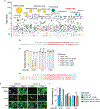



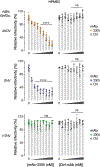
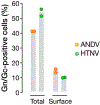
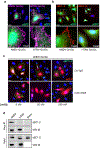




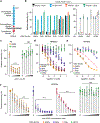


References
-
- MacNeil A, Nichol ST & Spiropoulou CF Hantavirus pulmonary syndrome. Virus Res. 162, 138–147 (2011). - PubMed
-
- Mortensen LJ, Kreiner-Moller E, Hakonarson H, Bønnelykke K & Bisgaard H The PCDH1 gene and asthma in early childhood. Eur. Respir. J. 43, 792–800 (2014). - PubMed
-
- Toncheva AA et al. Genetic variants in protocadherin-1, bronchial hyper-responsiveness, and asthma subphenotypes in German children. Pediatr. Allergy Immunol. 23, 636–641 (2012). - PubMed
Publication types
MeSH terms
Substances
Grants and funding
LinkOut - more resources
Full Text Sources
Other Literature Sources
Molecular Biology Databases
Research Materials
Miscellaneous

